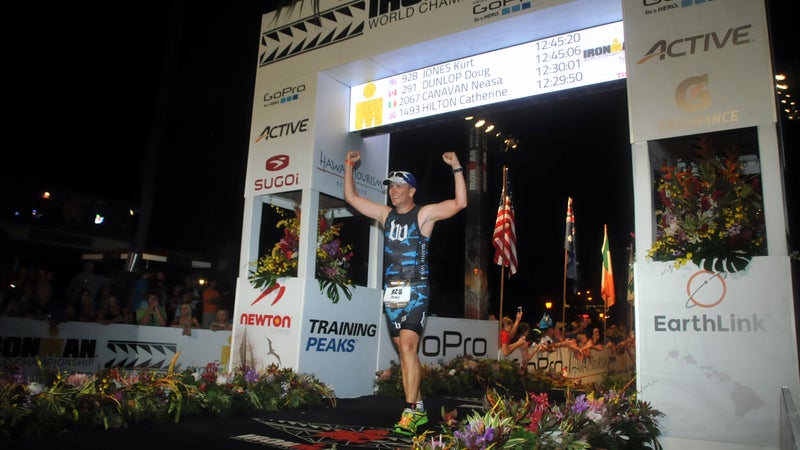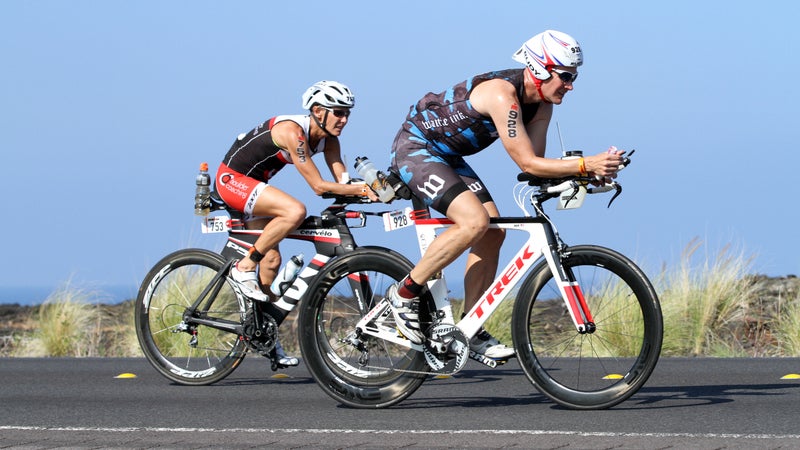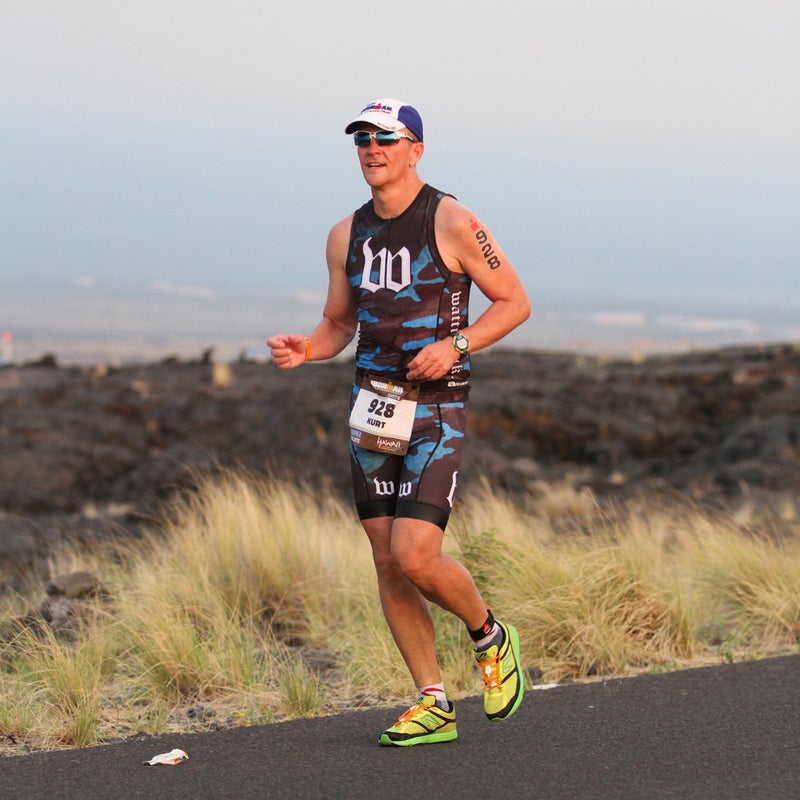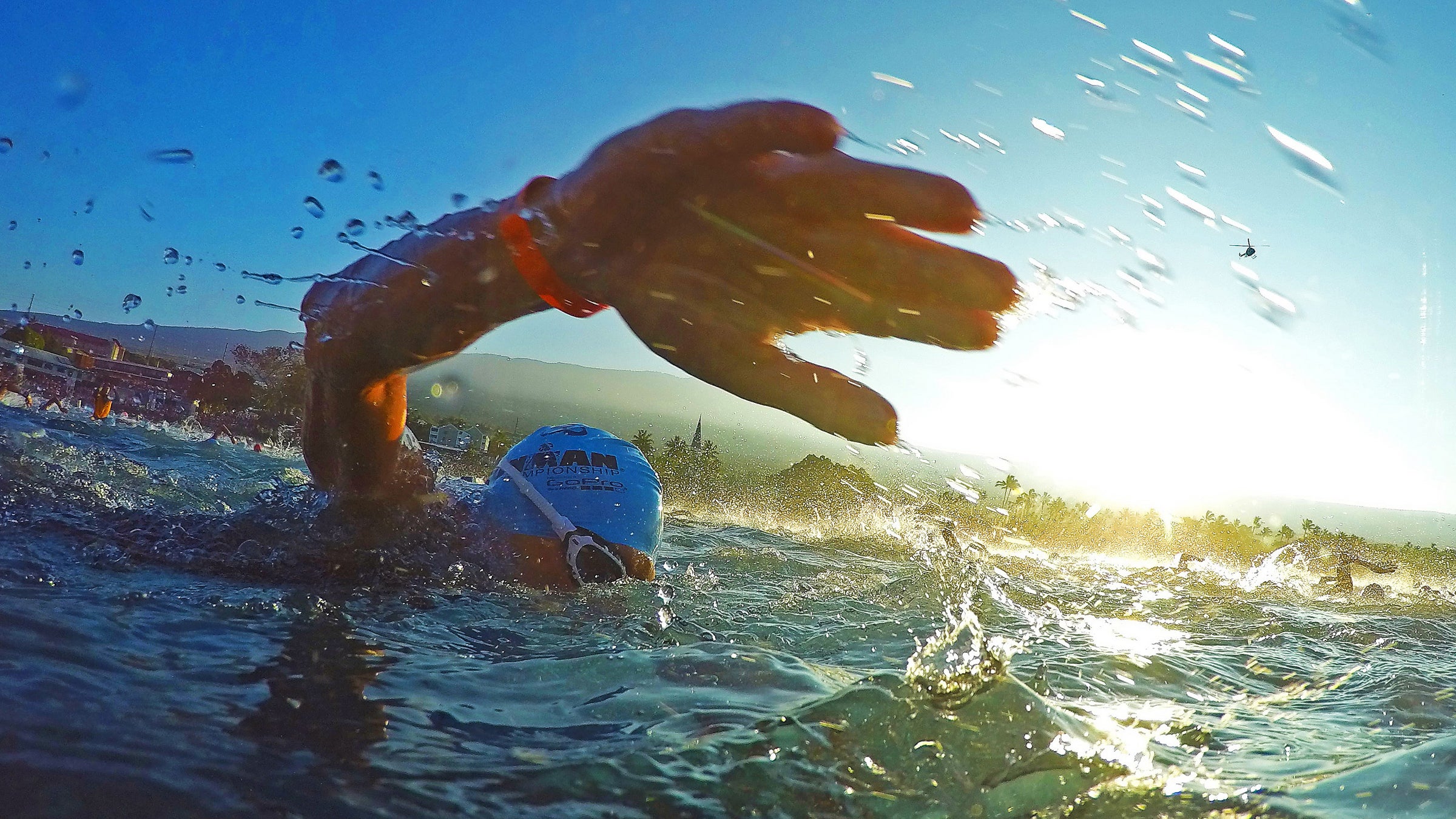Heat exhaustion, gastrointestinal issues, injuries, training or race plans gone haywire—the list goes on. When you’re pushing your body into the red zone, as most serious triathletes do, any number of variables can derail a race and send you straight into the pain cave. Take October’s Ironman World Championship in Kona, Hawaii, as an example. It wasn’t the hottest or windiest iteration of the famous triathlon, but the cloudless sky and 90-degree temps still took their toll, and 163 of the 2,307 competitors—some of the best long-distance triathletes in the world—ended up dropping out.
Similarly brutal conditions were common at triathlons around the country this past racing season. At June’s Coeur d’Alene race in Idaho, competitors started the last leg of the race, a marathon, in 104-degree heat. A third of the field dropped out. The month prior at Ironman Texas, held outside muggy Houston on an 89-degree day, the searing temperatures were a major issue—and one of the main reasons more than 13 percent of the field didn’t finish. “That’s Ironman,” says Kevin Dessart, a top age-group triathlete and nine-time Kona competitor who dropped out of this year’s race in Hawaii. It was his first DNF ever.

Fellow competitor Kevin Lee Petty had a better race. The 53-year-old from Kentucky repeatedly battled throughout his long-distance triathlon career. But at this year’s race in Kona, he carried three bottles of ItsTheNerve—the code name for a proprietary performance beverage designed to prevent and treat cramps—to extinguish the debilitating pain. During previous events, Petty, like a lot of triathletes, developed a coping mechanism to get him to the finish line: He’d ease up and wait for the cramping to subside, and then take it easy—effectively wiping out months of careful training and preparation—for the rest of the race.
This year was different. “At the turnaround point of the bike leg, I drank down a bottle,” Petty recalls. “I was going up against the worst of the head winds and riding uphill, and I have a tendency to cramp up between miles 70 and 80. Sure enough, my inner thighs started to cramp up, but suddenly it was gone. I was waiting for the cramping to come back, and it never did.”
Orlando, Florida–based Kurt Jones had a similar experience using the product. Last August, he headed up to the relative cool of Gilford, New Hampshire, to complete the Timberman half-Ironman race as a tune-up for a full Ironman later this year. Expecting a relatively easy day, he instead cramped up on the run. “Honestly, the cramping just ticked me off,” Jones says. “It just stopped me in my tracks and turned what was supposed to be a great tune-up race into a miserable experience.”

Jones then came across ItsTheNerve and started using it while training back in Florida. “It’s 95 degrees and humid. I would go out and intentionally try to make myself cramp on the bike,” he admits. “When I did, I took one dose, and within five minutes, the cramps in my legs went away, and they stayed away for the duration of the workout.”
ItstheNerve, the shot Petty and Jones downed to combat , was born out of the frustration of two kayakers, Rod MacKinnon and Bruce Bean, who faced their own cramping issues while paddling the open ocean off Cape Cod. Besides their shared misery on the water, both happen to be world-famous experts in brain physiology. MacKinnon is a Nobel Prize–winning neuroscientist, and Bean is a neurobiologist at Harvard. Their curiosity led MacKinnon to find out why cramping happens.
MacKinnon’s research started with a look at traditional sports drinks and other electrolyte solutions. His take: They’re predicated on replacing what people believe the body loses through sweat—if the body loses salt or potassium, then restore those levels. But he also came across stories of marathon runners stirring mustard into water and cyclists downing pickle juice to end . He was curious and asked himself, “What’s the story here?”
The more he learned, the more MacKinnon began to suspect that it wasn’t the muscle that needed help (electrolytes, fluids, carbs) but the central nervous system. Repeated firing of motor neurons during endurance activities seems to lead to hyperexcitability in these same nerve cells and can, in susceptible athletes, subsequently trigger cramps. It’s the nerve, not the muscle! Essentially, what the body needs in this situation is a quick remedy to tell the motor neurons in the spinal cord to chill out.

With that realization, MacKinnon spent the next four years zeroing in on what would eventually become the first scientifically proven formula to treat and prevent . By early 2015, he had perfected a spicy proprietary blend of ingredients. Here’s how it works: Right before a workout or at the onset of a muscle cramp, the athlete downs a shot of ItsTheNerve. Ion receptors in the mouth, throat, esophagus, and stomach respond and send signals to the brain stem, which appears to trigger a reflex-like response in the spinal cord to prevent hyperexcitability and cramping.
For Gary Tomlinson, from College Station, Texas, the spicy concoction meant the difference between surviving his Ironman race this past July in Boulder, Colorado, and competing in it. “At mile 89.3 of the bike stage, my adductor longus muscle began to lock up at almost the same point as it had a year earlier on the same course. That year, the pain forced me to walk the marathon,” the 45-year-old triathlete says. “This time, I immediately drank a bottle of ItsTheNerve. Usually I can’t stop the progression of cramps in my legs—they get progressively worse—but not this time.”
Tomlinson’s result speaks for itself. He shaved almost an hour and 45 minutes off his time, placing 62nd in his age group versus 166th the prior year. The beverage will be available for purchase in spring 2016. In the meantime, you can download more facts about the product and sign up to be one of the first to try it at .

